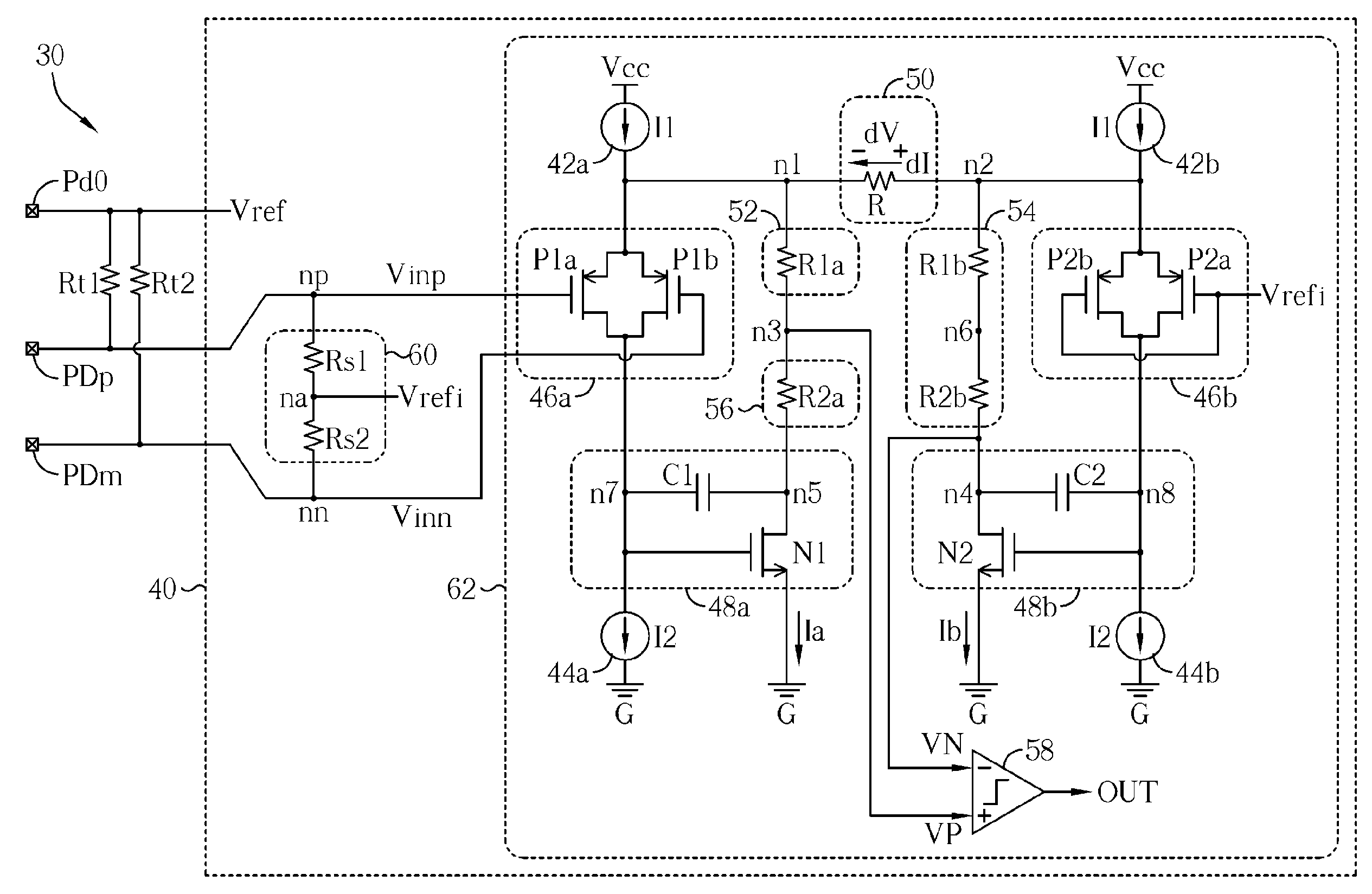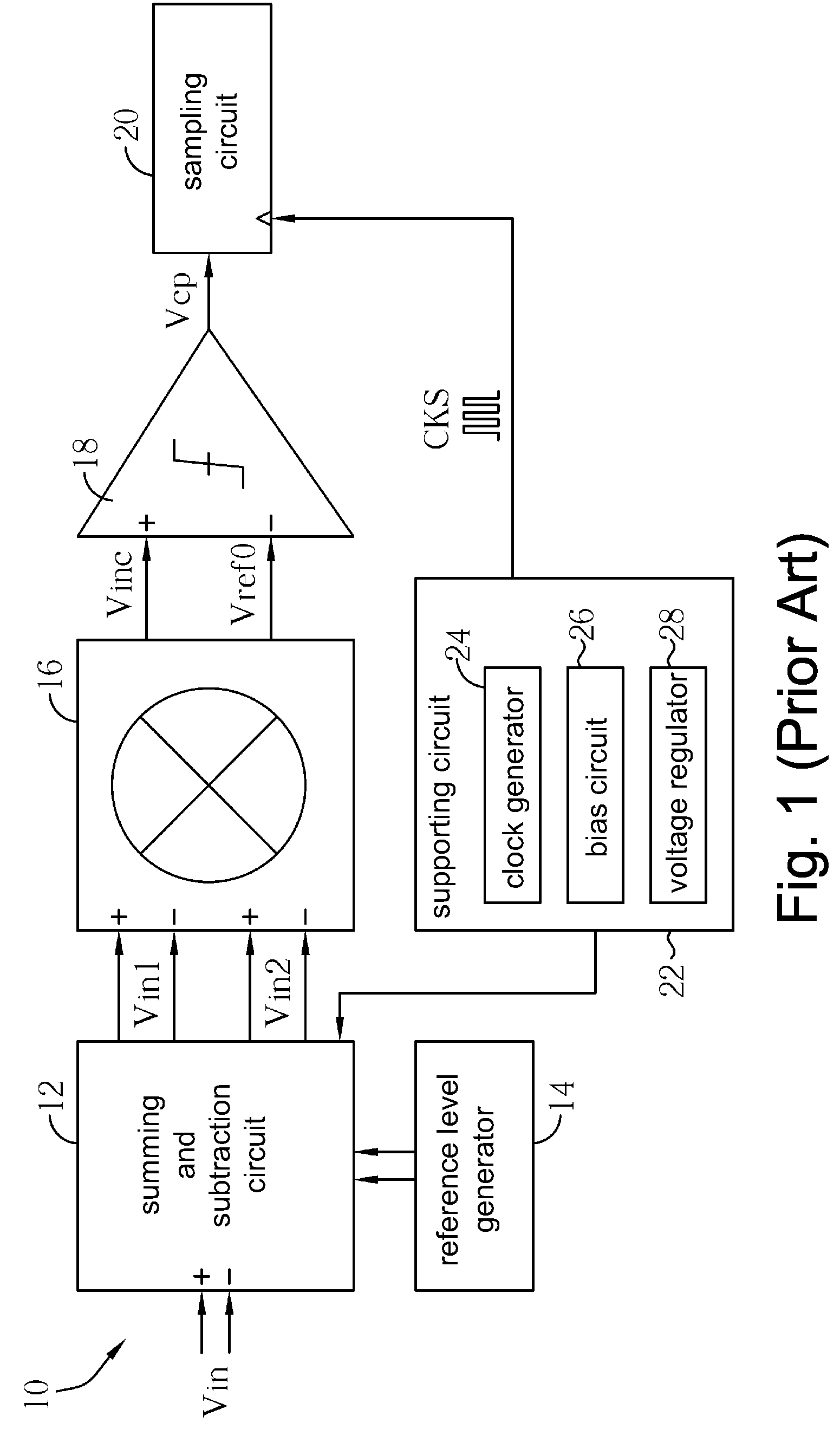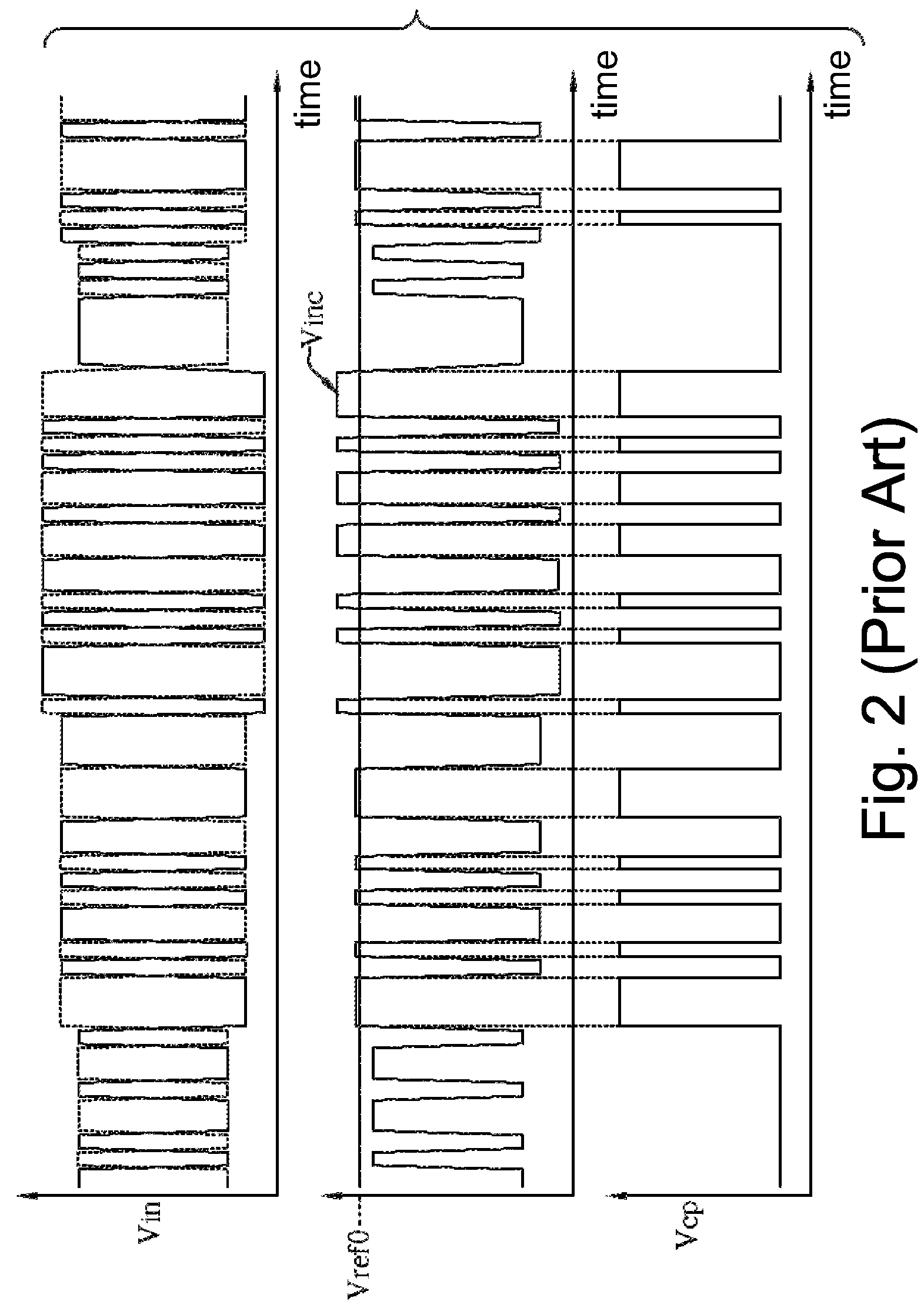Envelope detector and associated method
a detector and envelope technology, applied in the field of envelope detectors, can solve the problems of large layout area, high power consumption of voltage dividing network, noise and invalid data on the input port of the chip,
- Summary
- Abstract
- Description
- Claims
- Application Information
AI Technical Summary
Benefits of technology
Problems solved by technology
Method used
Image
Examples
Embodiment Construction
[0031]FIG. 3 shows a schematic diagram of an envelope detector 40 according to an embodiment of the present invention configured in a chip (e.g., an integrated circuit or a die) 30. The chip 30 is packaged in a package 38, and is disposed on a circuit board (e.g., a printed circuit board) 36. A remote electronic device 32 outputs differential data via a pair of output ends TXP and TXM to the chip 30. The output ends TXP and TXM are respectively coupled to a connector of the circuit board 36 via cables 34a and 34b, and then coupled to a pair of differential input pads PDp and PDm via traces on the circuit board as well as pins and bonding of the package 38. The envelope detector 40 configured in the chip 30 performs the squelch detection on paired differential signals Vinp and Vinn on the pads PDp and PDm to provide a signal OUT as the squelch detection signal. The signal OUT from the envelope detector 40 may be utilized in conjunction with a data retrieving digital data circuit (not...
PUM
 Login to View More
Login to View More Abstract
Description
Claims
Application Information
 Login to View More
Login to View More - R&D
- Intellectual Property
- Life Sciences
- Materials
- Tech Scout
- Unparalleled Data Quality
- Higher Quality Content
- 60% Fewer Hallucinations
Browse by: Latest US Patents, China's latest patents, Technical Efficacy Thesaurus, Application Domain, Technology Topic, Popular Technical Reports.
© 2025 PatSnap. All rights reserved.Legal|Privacy policy|Modern Slavery Act Transparency Statement|Sitemap|About US| Contact US: help@patsnap.com



